If you’;Alguna vez ha soñado con comenzar su propio negocio y tener pasión por la moda, Lanzar un negocio de ropa personalizado podría ser su oportunidad perfecta. Desde crear diseños personalizados hasta construir una marca que resuene con sus clientes, Las posibilidades son infinitas.
Sin embargo, Convertir su visión en un negocio exitoso requiere más que solo creatividad: requiere planificación, investigación, y crecimiento estratégico.
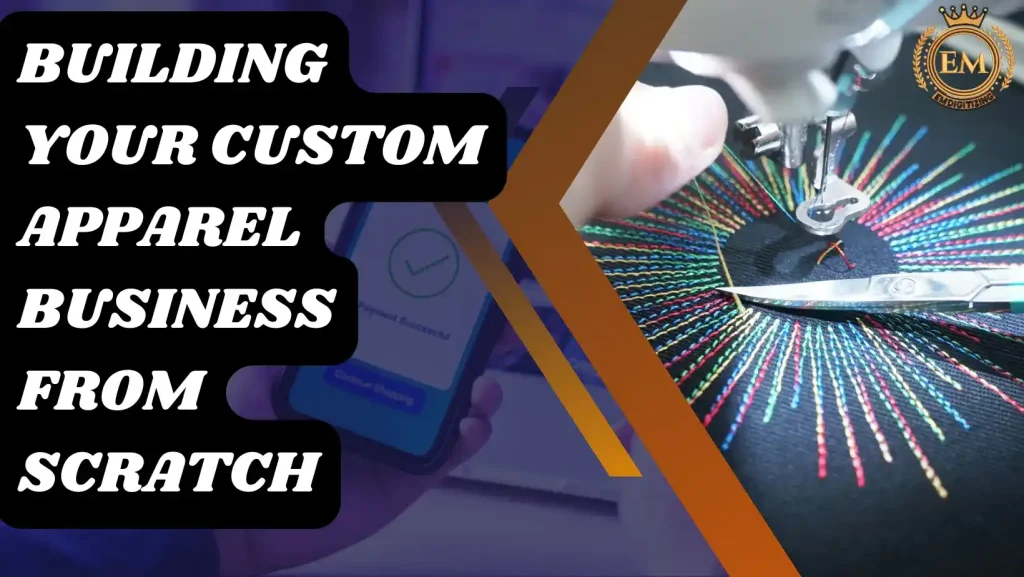
En esta guía, Exploraremos los pasos esenciales para ayudarlo a desplegar su ropa personalizada para los negocios., atraer a los clientes correctos, y escala su marca para el éxito a largo plazo.
Construyendo su negocio de ropa personalizada desde cero
1. Identificar su mercado de nicho y objetivo
Identificar su nicho y mercado objetivo es uno de los pasos más importantes para iniciar un negocio de ropa personalizada. Su nicho lo ayudará a concentrarse en productos específicos mientras comprende su mercado objetivo garantiza que sus diseños satisfagan las necesidades de los clientes..
Elegir entre impresión personalizada, Bordado, y otros métodos
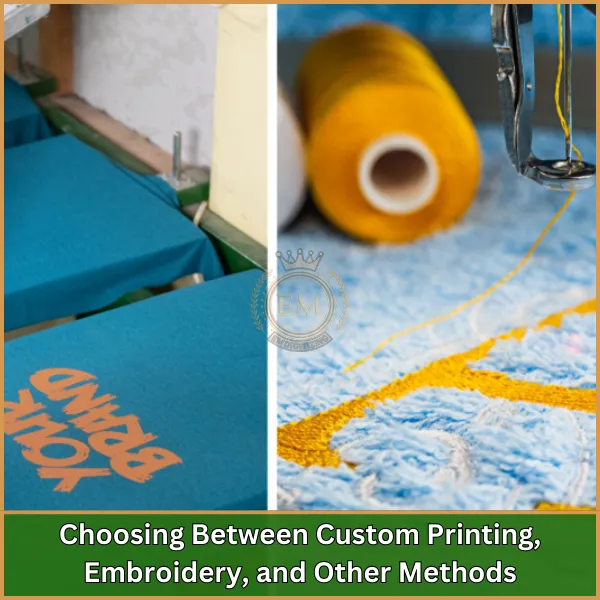
Al comenzar su negocio, Deberá decidir qué tipo de ropa personalizada desea producir.
Impresión personalizada, como impresión de pantalla, es popular para las camisetas, Si bien el bordado es excelente para la mejor ropa de negocios personalizado, como sombreros y chaquetas.
Cada método tiene sus propias ventajas, Así que elija el que se ajuste a sus habilidades y atraiga a su audiencia.
Comprender su mercado objetivo y las preferencias de los clientes
Su mercado objetivo es el grupo de personas con más probabilidades de comprar su ropa comercial bordada personalizada. ¿Son adultos jóvenes buscando camisetas de moda?, o clientes corporativos que desean uniformes bordados?
Comprender sus preferencias lo ayuda a diseñar productos que se venderán. Deberías investigar su edad, estilo de vida, y hábitos de compra para crear productos que les atraigan.
Análisis de la competencia: Encontrar su punto de venta único
También es importante investigar otras empresas de ropa personalizadas en su nicho. Mira lo que ofrecen tus competidores, su precio, y sus estrategias de marketing.
Esto le ayuda a encontrar formas de hacer que su negocio se destaque. Si se trata de mejores diseños, precios más bajos, o servicio al cliente excepcional, Su punto de venta único lo diferenciará de la competencia..
2. Plan de negocios y configuración legal
Un plan de negocios bien estructurado y una comprensión de los requisitos legales son clave para ejecutar una operación sin problemas. Su plan de negocios guiará sus decisiones y lo mantendrá en el camino mientras se mantiene legalmente compuesto por su negocio..
Elaboración de un plan de negocios detallado
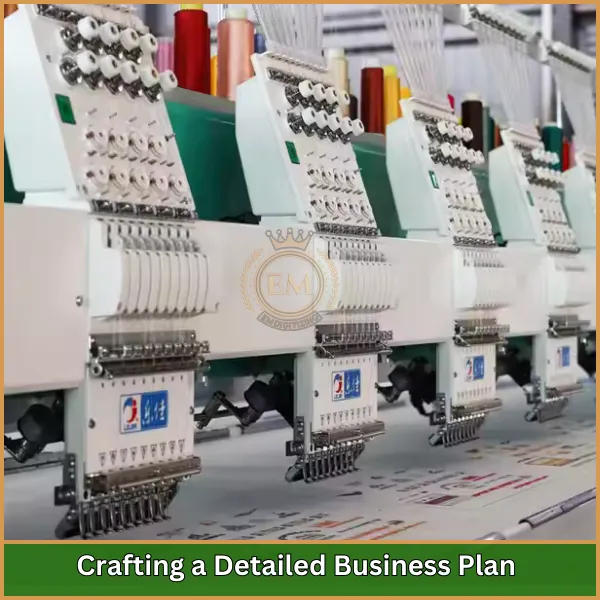
Un plan de negocios es su hoja de ruta para el éxito. Debería describir sus objetivos, mercado objetivo, ofertas de productos, y proyecciones financieras.
Incluya su presupuesto, ingresos esperados, y gastos, y tenga claro cómo comercializará y venderá sus productos.
Tener un plan fuerte lo ayudará a tomar mejores decisiones y evitar riesgos innecesarios a medida que aumenta su negocio.
Navegar por requisitos legales
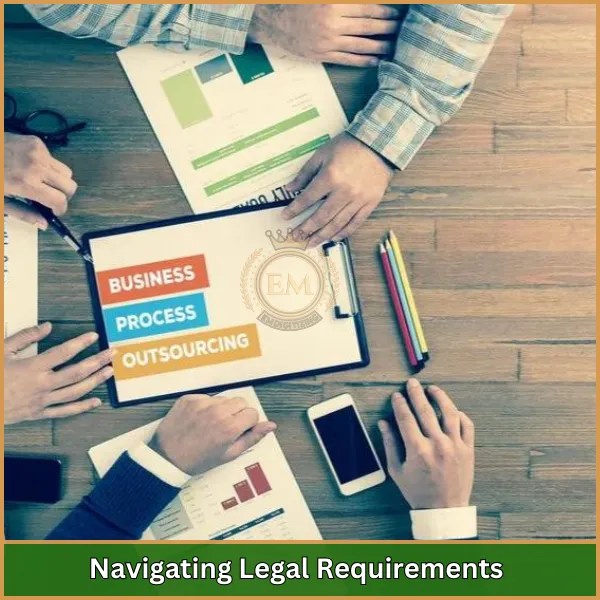
Antes de lanzarte, Asegúrese de comprender y seguir todos los requisitos legales para su negocio..
Esto podría incluir registrar su negocio de ropa personalizada para obtener licencias, y pagar impuestos. Diferentes áreas tienen diferentes leyes.
Por lo tanto, es importante verificar las regulaciones donde está operando.
El cumplimiento legal asegurará que la marca de ropa personalizada de su pequeña empresa funcione sin problemas sin obstáculos legales.
3. Diseño y desarrollo de productos
Sus diseños son el núcleo de su negocio de ropa personalizada. Aquí es donde entra en juego tu creatividad, y producir productos de alta calidad es crucial para la reputación de su empresa.
Creación de diseños únicos y comercializables
Tus diseños deberían estar frescos, creativo, y adaptado a tu audiencia. Manténgase al tanto de las tendencias de la moda mientras mantiene su propio estilo único. Si su mercado objetivo ama vibrante, diseños modernos, concéntrese en eso.
Si prefieren algo más clásico o simple, ajustar en consecuencia. Los diseños que resuenan con sus clientes distinguirán su negocio.
Desarrollo prototipo

Antes de lanzar la producción completa, Crea prototipos de tus diseños.
Los prototipos le permiten ver cómo se verá y se sentirá el producto final, y darle la oportunidad de hacer ajustes antes de producir a granel.
Esto ayuda a prevenir errores costosos y garantiza que sus productos cumplan con sus estándares de calidad..
Garantizar una calidad constante con procesos de control de calidad
El control de calidad es esencial para mantener una sólida reputación de marca. Ya sea que esté produciendo la ropa usted mismo o la subcontratación a un fabricante, Asegúrese de que cada producto cumpla con altos estándares.
Configurar procesos para verificar los defectos y asegurarse de que el producto final sea duradero, bien hecho, y exactamente lo que prometiste a los clientes.
4. Abastecimiento de materiales y optimización de la fabricación
Para crear productos de alta calidad, Deberá obtener los mejores materiales y asegurarse de que su proceso de fabricación sea eficiente y rentable..
Encontrar proveedores confiables para materiales
Los proveedores confiables son clave para el éxito en su negocio personalizado. Busque proveedores que ofrezcan telas y materiales de alta calidad para la mejor ropa comercial personalizada a precios competitivos.
Construir relaciones sólidas con estos proveedores asegura que siempre tenga los materiales que necesita para satisfacer la demanda y mantener la calidad..
Agilizar su proceso de fabricación para la eficiencia
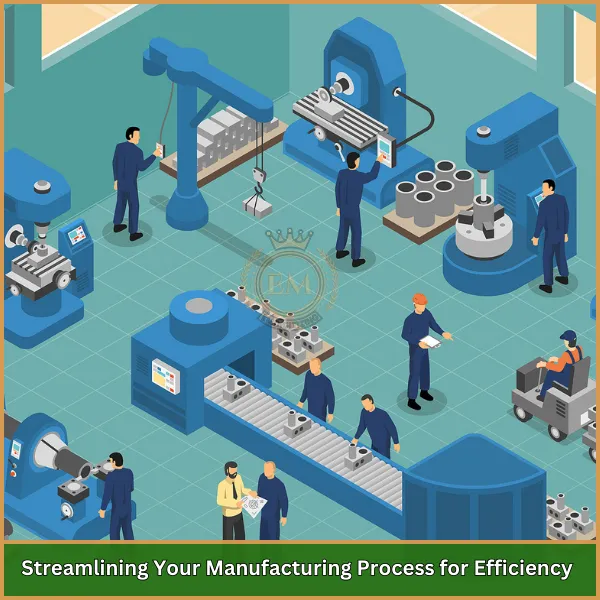
A medida que crece su negocio de ropa personalizada, querrá optimizar su proceso de fabricación para ahorrar tiempo y reducir los costos.
Busque formas de automatizar ciertas tareas o mejorar los flujos de trabajo para que pueda producir elementos más rápido sin sacrificar la calidad..
La fabricación eficiente le permite satisfacer la demanda de los clientes mientras mantiene los gastos bajos.
Gestión de costos y mantenimiento de la calidad del producto
Es importante administrar sus costos de producción mientras mantiene la calidad del producto.. Rastree sus gastos cuidadosamente, negociar mejores ofertas con proveedores, y busque formas de reducir costos sin reducir la calidad de sus productos.
Esto podría incluir usar equipos más eficientes o encontrar opciones de envío menos costosas.
5. Configuración y optimización de su plataforma de comercio electrónico
Una tienda en línea es esencial para llegar a los clientes y vender sus productos.. Configurar una plataforma de comercio electrónico sólida lo ayudará a mostrar sus productos y facilitar que los clientes le compren.
Elegir la mejor plataforma de comercio electrónico
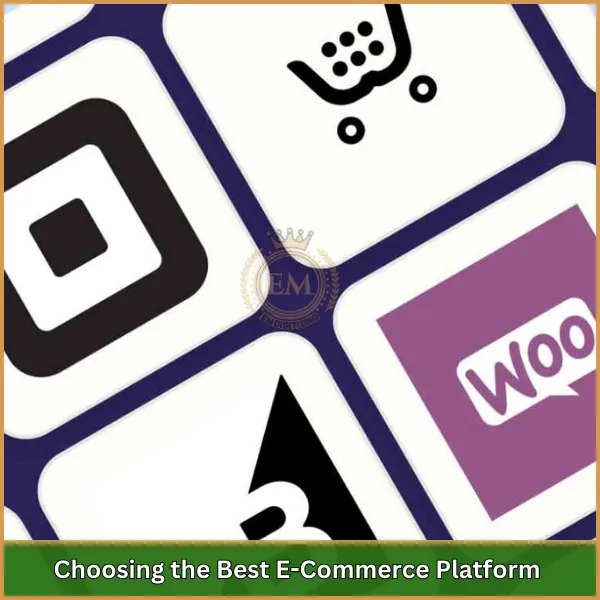
Hay muchas plataformas de comercio electrónico disponibles, incluyendo shopify, WooCommerce, y Etsy.
Cada uno ofrece diferentes características, así que elija el que mejor se adapte a las necesidades y al presupuesto de su negocio.
Querrá una plataforma que sea fácil enumerar sus productos., Administrar pedidos, y aceptar pagos de forma segura.
Diseño de un sitio web fácil de usar
Su sitio web debe ser sencillo de navegar y reflejar la personalidad de su marca.. Use imágenes de alta calidad para mostrar sus productos, y asegúrese de que el proceso de pago sea rápido y fácil.
Un sitio web fácil de usar ayuda a los clientes a encontrar lo que están buscando y les hace más probabilidades de completar una compra.
Asegurar el procesamiento de pagos y la construcción de la confianza del cliente
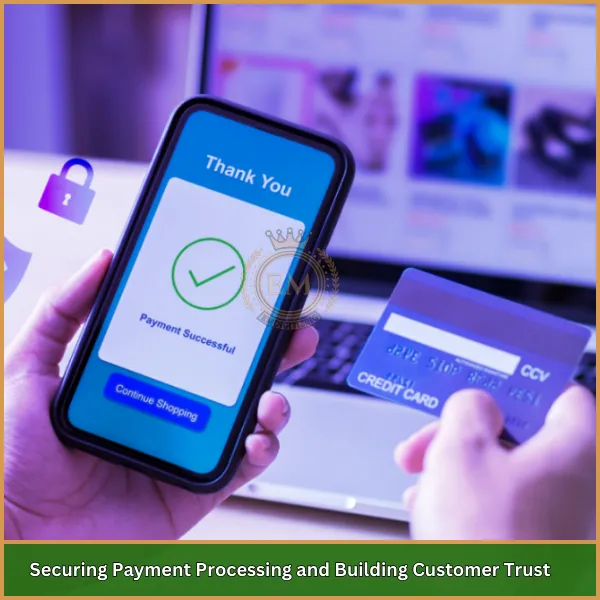
Los clientes deben sentirse seguros al comprar en su tienda en línea. Use pasarelas de pago seguras como PayPal o Stripe, y asegúrese de que su sitio web tenga cifrado SSL para proteger su información personal.. Construir confianza con sus clientes fomentará los negocios repetidos.
6. Marketing y marca su negocio
El marketing y la marca son clave para atraer clientes y construir una base de clientes leales. La identidad de su marca debe ser fuerte y consistente, Y sus estrategias de marketing deben involucrar a su audiencia.
Desarrollar una fuerte identidad de marca
Su marca es más que solo su logotipo: es la personalidad de su negocio de ropa personalizada. Piense en lo que hace que su negocio sea único, si es la calidad de su producto, servicio al cliente, o enfoque ecológico.
Desarrolle una identidad de marca que refleje sus valores y atraiga a su público objetivo.
Lanzamiento de campañas efectivas de marketing digital
El marketing digital es una de las mejores maneras de llegar a su audiencia. Use anuncios dirigidos en Facebook, Instagram, y Google para promocionar sus productos. También puede crear campañas de marketing por correo electrónico para mantener a los clientes informados sobre nuevos productos., descuentos, y ofertas especiales.
Hacer crecer su marca con el compromiso de las redes sociales
Las redes sociales son una herramienta poderosa para conectarse con sus clientes. Publica regularmente en plataformas como Instagram, Facebook, Y Teltok, e interactúe con sus seguidores respondiendo a los comentarios y mensajes.
Ejecutar concursos o regalos para atraer nuevos clientes y construir una comunidad alrededor de su marca.
7. Gestión de pedidos, Inventario, y relaciones con los clientes
Gestión de pedidos, inventario, y las relaciones con los clientes de manera efectiva son clave para mantener su ropa personalizada para que los negocios funcionen sin problemas.
Cumplimiento de la orden: De la compra a la entrega
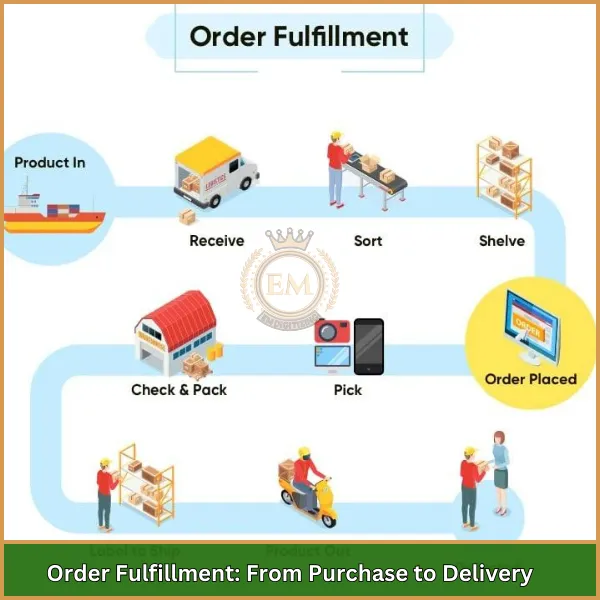
Una vez que un cliente realiza un pedido, Asegúrese de que se procese rápidamente y se envíe a tiempo.
Elija socios de envío confiables para garantizar que sus productos lleguen de manera segura y programada..
Mantener a los clientes actualizados sobre el estado de su pedido ayuda a generar confianza y satisfacción.
Implementación de sistemas de gestión de inventario robustos
Hacer un seguimiento de su inventario es esencial para evitar la escasez de existencias o los pedidos excesivos. Use el software de gestión de inventario para rastrear lo que tiene en stock, demanda de pronóstico, y reordenar productos antes de que se agoten.
Esto mantiene su negocio funcionando sin problemas y lo ayuda a satisfacer la demanda de los clientes..
Construir relaciones con los clientes a través de un servicio personalizado
El servicio al cliente personalizado es una excelente manera de generar lealtad. Utilice herramientas como la gestión de relaciones con el cliente (CRM) sistemas para rastrear las preferencias e historial del cliente. Envíe correos electrónicos o descuentos personalizados a clientes habituales para que se sientan valorados.
8. Integración de atención al cliente e integración de comentarios
Excelente servicio al cliente y escuchar comentarios son clave para mantener a los clientes felices y mejorar su negocio de ropa personalizada.
Brindar un servicio al cliente excepcional
Responder a las consultas de los clientes de manera rápida y cortés. Si hay un problema con un pedido, Trabaja para arreglarlo de inmediato. El excelente servicio al cliente hace que sus clientes se sientan valorados y más propensos a comprarle nuevamente.
Recopilar y actuar sobre los comentarios de los clientes
Solicite comentarios a sus clientes sobre su experiencia con sus productos y servicios.. Use encuestas, reseñas, o encuestas de redes sociales para reunir sus opiniones. Escuche comentarios positivos y negativos para mejorar su negocio.
Creación de programas de fidelización para retener a los clientes
Los programas de fidelización son una excelente manera de recompensar a los clientes de los habituales. Ofrecer descuentos, Acceso exclusivo a nuevas colecciones, o envío gratis a sus clientes leales. Estas ventajas los alentarán a seguir volviendo.
9. Escalar y hacer crecer su negocio
A medida que su negocio se vuelve más exitoso, Busque formas de crecer y expandir sus operaciones.
Explorando oportunidades de expansión
Hay muchas formas de expandir su negocio. Podrías comenzar a ofrecer nuevos productos, abrir una tienda física, o asociarse con otras empresas para llegar a nuevos clientes. Busque siempre oportunidades de crecimiento que se alineen con su marca.
Contratación y personal: Hacer crecer tu equipo

A medida que su negocio crece, Es posible que deba contratar más personal para manejar la producción., marketing, y servicio al cliente.
Busque empleados que compartan su pasión por el negocio y puedan ayudar a llevarlo al siguiente nivel.
Revisar y actualizar su plan de negocios
Su plan de negocios debería crecer con su negocio. Mientras se expande, Revise y actualice su plan para reflejar nuevos objetivos, desafíos, y oportunidades. Un plan flexible lo ayudará a adaptarse a los cambios en el mercado y continuar creciendo.
Comience su viaje de ropa personalizado con Emdigitizing a su lado
Comenzar un negocio de ropa personalizado es una aventura emocionante, and whether you’;re inclinarse hacia bordado o impresión, No tienes que hacerlo solo.
A EMdigitalización, Estamos aquí para facilitarte las cosas. Sabemos que administrar una pequeña empresa puede ser un desafío, especialmente con presupuestos ajustados y demandas crecientes, Pero ahí es donde entramos.
Con nuestro asequible y confiable digitalización de bordados y servicios de arte vectorial, ayudaremos a dar vida a sus diseños rápidamente y con calidad de primer nivel.
Estamos comprometidos a entregar los mejores resultados para que pueda concentrarse en hacer crecer su marca.. Y para ayudarte a comenzar, estamos ofreciendo un 50% descuento para clientes primerizos!
Entonces, ¿por qué esperar?? Deje que Emdigitizing apoye su negocio con servicios de diseño experto, porque estamos tan apasionados por su éxito como usted.
Ordenar hoy Y mira tu visión cobrar vida!
preguntas frecuentes
Para comenzar un negocio de mercadería personalizado, Investigue su mercado objetivo, Elija un nicho, Seleccione un servicio imprimido a pedido o método de producción, y configurar una tienda en línea.
Vender camisas personalizadas puede ser rentable con una marca efectiva, marketing, y un único diseño acercarse, especialmente al utilizar servicios de impresión a pedido para minimizar los costos iniciales.
El margen de beneficio en las camisetas puede variar ampliamente, normalmente van desde 50% a 100%, Dependiendo de los costos de producción, estrategia para colocar precios, y canales de venta.
Para vender merchandising legalmente, Obtenga las licencias comerciales necesarias, and if you’;Re usando material con derechos de autor, Asegurar permisos o licencias de los titulares de derechos de autor.
